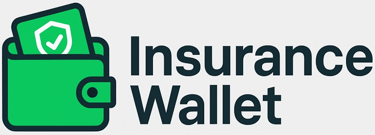🧾 Risk Classification – How Insurers Decide Your Client’s Premium
🌟 Introduction
When a client asks, “Why is my premium higher than someone else’s?”,
the answer lies in Risk Classification.
Insurance is based on fairness — people with similar risk pay similar premium.
So insurers must place every client into the right risk category.
Risk classification = deciding which risk group a customer belongs to, based on their chances of making a claim.
🎯 Why Risk Classification Matters
Insurers collect premium from many to pay claims for a few.
If risks are not classified properly:
Safe customers would end up paying for risky ones
High-risk clients may get cheap cover and cause heavy losses
The insurance pool becomes unbalanced
So, correct classification keeps insurance sustainable and fair.
🧠 How Insurers Think During Classification
When reviewing an application, insurers basically ask:
How likely is this person/property to face a loss?
How severe can that loss be?
Has anything in the past shown risk behaviour?
The answers decide premium, terms, and sometimes eligibility.
🔍 Factors Insurers Use to Classify Risk
Insurers study several aspects depending on the product type. Some common ones:
✅ Age
Younger customers (life/health/motor) usually pay lower premiums.
Older customers → higher risk → higher premium.
✅ Occupation
Office worker vs. construction worker — who faces more physical hazard?
Riskier professions = higher premium.
✅ Lifestyle & Habits
Smoking, alcohol intake, high-stress jobs, adventure sports — all increase risk.
✅ Health Condition
Medical history, weight, family history of illness — impacts life/health premium.
✅ Location & Environment
A shop in a fire-prone or theft-prone area may pay higher premium than one in a mall with safety systems.
✅ Nature of Property / Vehicle
High-end car vs. basic car
Old building vs. modern building with fire safety
Commercial vehicle vs. private car
Each carries different risk levels.
✅ Past Claims History
Frequent claims in the past = higher perceived risk.
This may result in loading (extra premium) or stricter conditions.
🧯 Risk Classification in Action – Simple Example
Two people buy motor insurance:
Asha drives safely, no accident history, lives in a safe locality
Rahul has two past accident claims, lives in a theft-prone area
Who pays higher premium?
👉 Rahul, because the insurer sees a higher probability of future claims.
🧾 Risk Classes You Will See in Practice
Insurers broadly classify clients into:
Standard Risk – normal expected risk, regular premium
Preferred Risk – lower than average risk, possible discount
Substandard/High Risk – higher chance of claim, loaded premium
Uninsurable – risk too high, insurer declines cover
💡 Advisor Tip
When clients ask, “Why is my premium higher?”, you can say:
“Insurance premiums are based on risk.
Better safety + good health + responsible behaviour = better price.”
Encourage them to:
Maintain good health
Follow safety practices
Avoid unnecessary claims
Maintain property and vehicles well
Doing so not only protects them — it also reduces their premium over time.
🧠 Quick Recap
Risk classification helps insurers decide premium fairly
It depends on factors like age, health, location, lifestyle, claims history, occupation, and property type
Lower risk = lower premium
Higher risk = loading or stricter terms — sometimes even rejection
Good behaviour and safe habits reward clients over time
